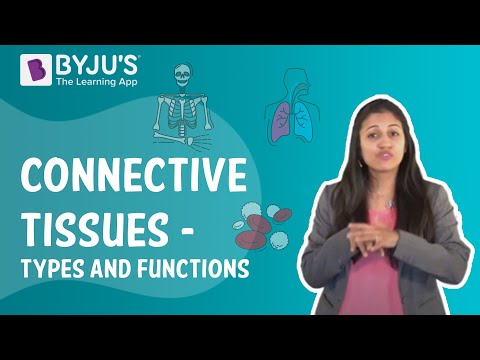It is a known fact to all biology enthusiasts that unlike unicellular microbes, animals and plants show a higher level of organization. They have complex body structure where a group of cells performs functions in a systematic way. In animals and plants, cells are grouped together to form tissues. These tissues vary in their structure, function, and origin. Types of animal tissue include epithelial tissue and connective tissue, and their structure and functions in animals are discussed below.
Animal Tissue
A group of cells similar in structure, function, and origin is called tissues. In animals, the structure of tissue depends on its function. An animal body is made of four different types of tissues. They have been classified based on the type of cell, function, and location in the body. They include:
- Epithelial Tissue
- Muscle Tissue
- Connective Tissue
- Nerve Tissue
Epithelial Tissue
All layers and organs in the body are lined by a group of tissues called epithelial tissues which are commonly referred to as epithelium. They cover the surface of all internal as well as external organs. Epithelial tissue is highly permeable. Thus, it plays a significant role in the exchange of substances across the cells and helps in maintaining the osmoregulation. Depending on the number of layers of cells it is composed of, the epithelium has been divided into the simple epithelium and compound epithelium. The main functions of epithelial tissue are protection, secretion, absorption, and sensation.

Simple Epithelial Tissue
This type of epithelium is composed of a single layer of cells which mainly make up the linings of ducts, tubes and other cavities in the body. Based on the structure of the cell, the simple epithelial tissue is classified into three types viz.:
Squamous epithelium:
- It is a simple single-layered epithelium.
- Structurally, the squamous epithelium is made up of flat cells with irregular boundaries.
- It forms linings of blood vessels and alveoli.
Cuboidal epithelium:
- The tissue is made of cube-shaped cells.
- It forms the lining of kidney tubules and ducts of salivary glands.
Columnar epithelium:
- It is composed of tall and slender, column-shaped
- It forms the lining of the stomach and intestine.
In some organs, cuboidal and columnar epithelial have cilia present on the outer surface which is called the ciliated epithelium. It helps in the directional movement of materials along with the hollow organs like the respiratory tract. The cuboidal or columnar epithelia which are specialized in secretions are called glandular epithelium which includes the exocrine and endocrine glands.
Compound Epithelial Tissue
The compound epithelium is a multilayered (two or more layers of cells) tissue. The key function of compound epithelium is protection and has a limited role in secretion. Skin is a compound epithelium which functions as a barrier against chemical and mechanical stresses.
Connective Tissue
As their name suggests, they connect and support the different tissues, organs, and parts of the body. Among the animal tissues, connective tissues are the most abundant ones in the body. The connective tissue cells are freely arranged in a matrix and are widely distributed in the body. Different types of connective tissues include areolar tissue, adipose tissue (fat), blood, bone, and cartilage. Except for blood, all other cells secrete collagen (elastin) which offers elasticity and flexibility to the tissues.

Areolar Connective Tissue:
- It is found underneath the skin; also around nerves and blood vessels.
- It is composed of fibroblasts, macrophages and mast cells.
- It provides support and repair tissues.
Adipose Tissue:
- It is present in skin and organs.
- It is composed of fat globules and is characterized by fat storage
- It provides insulation due to the fat present.
Areolar tissue and adipose tissue are two types of loose connective tissues where the cells and fibres are loosely scattered in the semi-fluid matrix.
Bone:
- Bone is a hard connective tissue which forms the framework of the body.
- It has a rigid matrix rich in calcium and collagen fibres.
- Functions include protection, support, facilitates movements and serves as a site for blood cell production.
Cartilage:
- Cartilage is made of chondrocytes with dense, flexible intercellular materials.
- In the majority of vertebrates, cartilages in embryos get replaced by bones on maturity.
- They are present at the tips of external ears, bronchi, vertebral column, etc.
Blood:
- Blood is the only fluid connective tissue composed of blood cells (RBC, WBC, and platelets) and plasma.
- Functions: Transportation, defence, blood clotting and helps in homeostasis.
Blood, bone, and cartilage are specialized connective tissues.
To learn more about epithelial tissue and connective tissue with video lessons, visit BYJU’S.

Congratulations. Nice note
Please provide the notes for the muscular tissue as well as nervous tissue and please provide some more details in this like where they are found and the difference between them